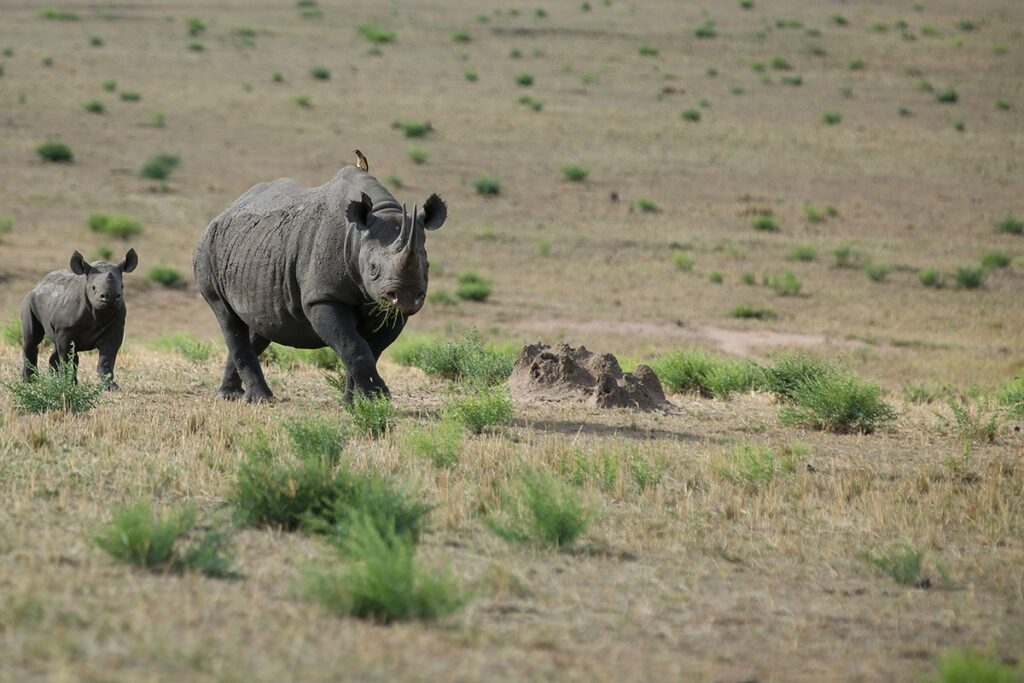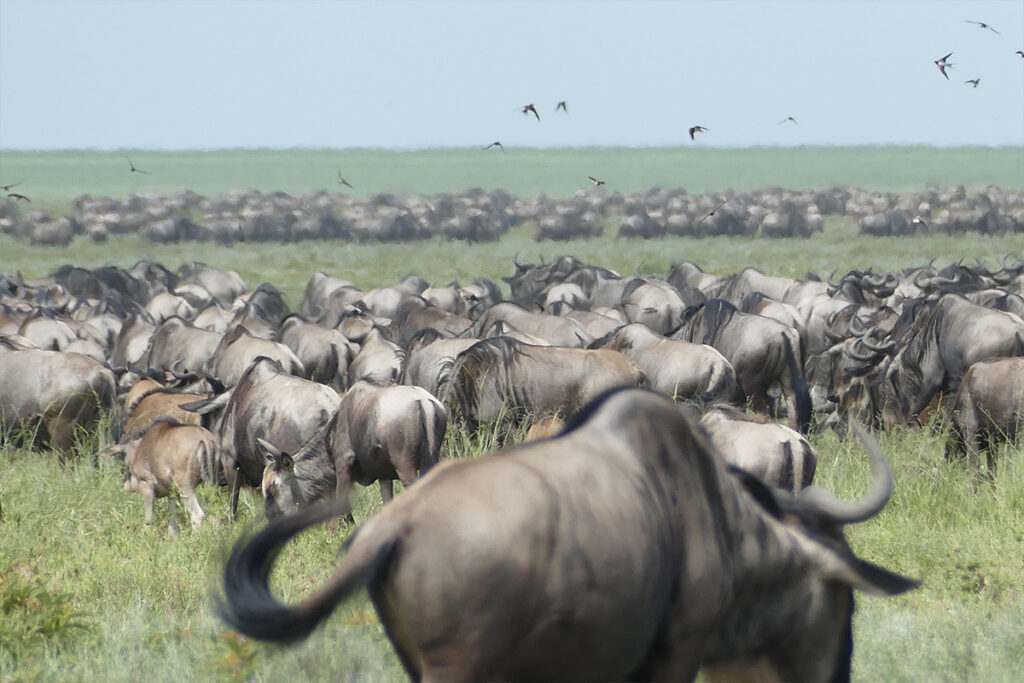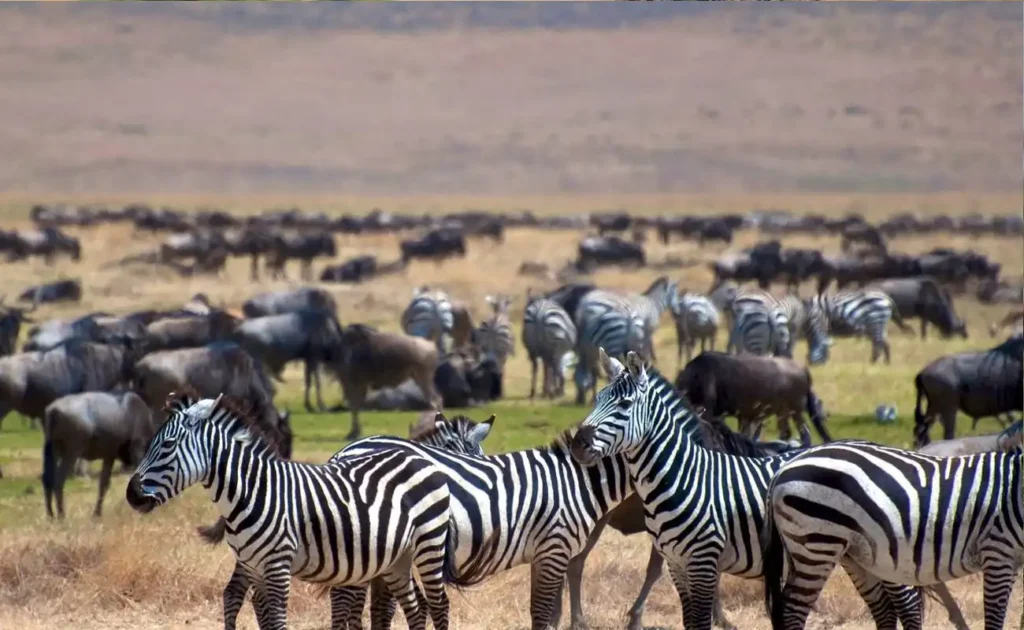Embarking on a safari in Tanzania is a journey into the heart of Africa, where untamed wilderness meets breathtaking landscapes and abundant wildlife. This comprehensive guide will give you everything you need to know to plan the ultimate Tanzania safari, ensuring your adventure is unforgettable.
Why Tanzania is the Perfect Safari Destination
Tanzania is renowned for its diverse ecosystems, which include the vast Serengeti plains, the towering Mount Kilimanjaro, and the lush Ngorongoro Crater. The country is home to some of the most iconic wildlife species, such as lions, elephants, leopards, rhinos, and buffaloes, often referred to as the “Big Five.” Beyond the Big Five, Tanzania offers the opportunity to witness the Great Migration, a natural spectacle where millions of wildebeest, zebras, and gazelles traverse the Serengeti in search of fresh grazing grounds.
The Best Time to Visit Tanzania for a Safari
Tanzania’s climate varies across its regions, but the best time for a safari generally falls between June and October. This period is the dry season when the weather is more predictable, and wildlife is easier to spot around water sources. The Great Migration typically peaks between July and September, making it an ideal time for witnessing this extraordinary event. However, the calving season in the Serengeti, from January to February, is also a great time to visit, as it offers a chance to see newborn animals and predator-prey interactions.
Top Safari Destinations in Tanzania
1. Serengeti National Park
The Serengeti is Tanzania’s most famous national park and one of the best places in Africa for wildlife viewing. Covering an area of 14,750 square kilometers, the Serengeti is home to a staggering variety of wildlife, including the Big Five. The park is most renowned for the Great Migration, which sees millions of wildebeest, zebras, and other herbivores moving across the plains in search of greener pastures.
2. Ngorongoro Crater
The Ngorongoro Crater, a UNESCO World Heritage site, is the world’s largest inactive volcanic caldera. The crater is approximately 20 kilometers wide and 600 meters deep, creating a natural enclosure for a diverse array of wildlife. Visitors to the Ngorongoro Crater can expect to see large herds of elephants, rhinos, lions, and buffaloes, as well as flamingos that flock to the crater’s lake. The crater is often referred to as the “Garden of Eden” due to its stunning scenery and rich biodiversity.
3. Tarangire National Park
Tarangire National Park is a lesser-known gem in Tanzania’s northern circuit. The park is named after the Tarangire River, which provides a vital water source for wildlife during the dry season. Tarangire is famous for its large elephant herds and ancient baobab trees, which create a unique landscape. The park is also home to a variety of bird species, making it a paradise for birdwatchers.
4. Lake Manyara National Park
Lake Manyara National Park is a small but diverse park located between the Serengeti and Ngorongoro Crater. The park is known for its tree-climbing lions, a rare behavior seen in only a few places in Africa. Lake Manyara itself attracts thousands of flamingos and other waterbirds, making it a beautiful spot for birdwatching. The park’s varied landscape includes dense forests, acacia woodlands, and open grasslands, offering a diverse safari experience.
5. Selous Game Reserve
For those seeking a more remote and off-the-beaten-path experience, the Selous Game Reserve in southern Tanzania is an excellent choice. Selous is one of the largest protected areas in Africa, covering an area of over 50,000 square kilometers. The reserve is known for its undisturbed wilderness, where visitors can enjoy boat safaris along the Rufiji River, walking safaris, and game drives. Selous is home to a wide variety of wildlife, including African wild dogs, hippos, crocodiles, and a large population of elephants.
Safari Types and Activities
Tanzania offers a wide range of safari types and activities, catering to different preferences and interests. Whether you’re seeking luxury or adventure, there’s something for everyone.
Game Drives
Game drives are the most common type of safari in Tanzania. These guided tours allow you to explore the national parks and reserves in 4×4 vehicles, providing the opportunity to get up close to wildlife. Early morning and late afternoon game drives are usually the most productive times for wildlife sightings.
Walking Safaris
For a more immersive experience, walking safaris offer the chance to explore the African bush on foot, accompanied by an experienced guide. This type of safari allows you to appreciate the smaller details of the ecosystem, such as plants, insects, and tracks, that you might miss from a vehicle. Walking safaris are available in several parks, including the Selous Game Reserve and Ruaha National Park.
Balloon Safaris
For a truly unique perspective, consider taking a balloon safari over the Serengeti. As you drift silently above the plains, you’ll have a bird’s-eye view of the wildlife below, including herds of wildebeest and elephants. Balloon safaris usually take place at dawn, followed by a champagne breakfast in the bush.
Boat Safaris
In parks like Selous Game Reserve and Lake Tanganyika, boat safaris offer a different way to experience Tanzania’s wildlife. Gliding along rivers and lakes, you’ll have the chance to see hippos, crocodiles, and a variety of bird species up close.
Planning Your Tanzania Safari
Choosing the Right Safari Operator
Selecting a reputable safari operator is crucial to ensuring a safe and enjoyable experience. Look for operators with knowledgeable guides, well-maintained vehicles, and a commitment to responsible tourism. It’s also important to choose an operator that aligns with your travel style, whether you prefer luxury lodges or more rustic camping experiences.
What to Pack for a Tanzania Safari
Packing for a safari requires careful consideration, as you’ll need to be prepared for a range of conditions. Essential items include lightweight, breathable clothing in neutral colors, a wide-brimmed hat, sunglasses, and a good pair of binoculars. Don’t forget to pack insect repellent, sunscreen, and any necessary medications. If you’re planning to visit during the cooler months, a warm jacket or fleece is also recommended for early morning and evening game drives.
Health and Safety Considerations
Before traveling to Tanzania, it’s important to consult with your healthcare provider about vaccinations and malaria prophylaxis. Tanzania is a malaria-endemic country, so taking precautions is essential. In addition, be aware of the risks of sun exposure and dehydration, especially during the hotter months.
Respecting Wildlife and Local Communities
Responsible tourism is key to preserving Tanzania’s natural beauty and cultural heritage. Always follow the guidelines provided by your safari guide, maintain a respectful distance from wildlife, and avoid disturbing their natural behaviors. When visiting local communities, be mindful of cultural norms and practices, and consider supporting community-based tourism initiatives that benefit local people.



